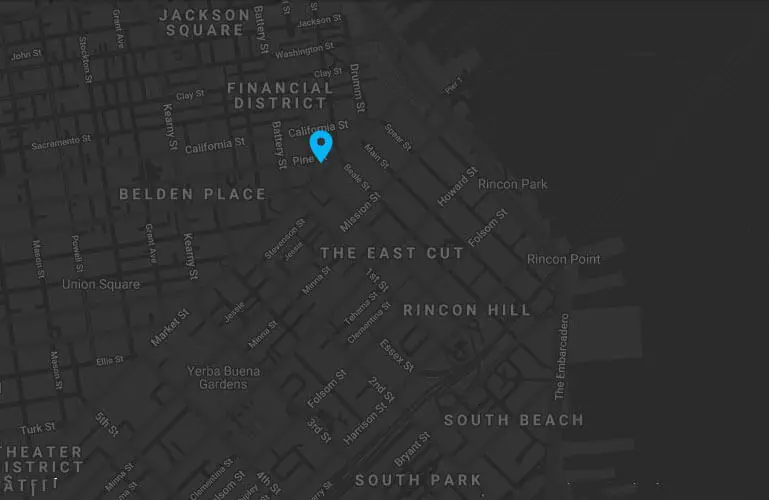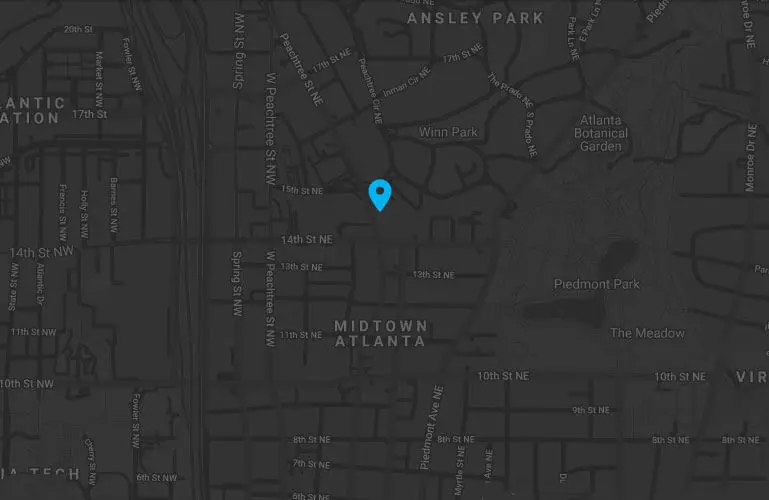Follow These Professional Guidelines To Create A Killer Small Business Website
A successful small business website has Presence.
Right. So what exactly does that mean?
Presence means so much more than just the state or fact of being present; it means that you have arrived to the party and all eyes are on you.
YOU need Presence. That’s where we come in. You see now, more than ever before, we believe that it’s important for companies to stand up, stand out, beat their chests, be noticed. What makes your company different than any of the other 1.2 trillion joe-bag-o-donuts in your industry? Presence, you see, makes the difference. Presence cuts through mediocrity and complacency. Presence is the needle’s penetrating blow to the balloon of pomposity. The lack of Presence exposes the frauds and the pretenders. Presence changes things. Presence is enduring. Presence is everything.
Now you’re getting it.
A well-defined Web Presence begins with the act of discovery, then forging ahead with creative and search-based marketing for impact. Then, our combined efforts culminate when we deliver significant and consistently measurable results – actualizing your true potential.
For a small business website to create Presence there are some fundamental laws that must be obeyed. Determining the small business website design that is right for you is not an easy task.
So let’s step back and begin the discovery process by asking small business website design questions you will need to know the answers to:
- Do small businesses need a website?
- What is the best website for a small business?
- Where do I find a small business website designer?
- Are there small business website designers near me?
- How much does a small business website cost?
- How long does a small business website take to build?
- How can I maintain my small business website myself?
- Where should I host my small business website?
In this article, I will help answer these questions and provide guidance that stems from over 22 years experience in the web design industry, managing one of the leading web design agencies in the country. Follow my golden rules and you will discover the uncharted country.
Small Business Website Design Guide Golden Rule #1.
Don’t be cheap.
A professionally-designed small business website ‘aint cheap, so prepare yourself to make a significant investment regardless of your business size, type or where you are in the business life cycle. A strong web presence will provide a huge competitive advantage, whether you are a start-up or mature business. The first mistake many companies make when creating their website is to make cost the primary factor. It’s tempting to believe the marketing pitches of those DIY (do it yourself) services or discount web agencies, but don’t be fooled. You will get what you pay for. An effective Web Presence is vital to your long-term success, online or offline.
Here are some considerations that will help you come to the right balance between cost, objectives and requirements:
…….
Time
How much of your personal or staff’s time are you willing to commit to the website development project? The greater the investment of human resources, the less cost associated with building the website. Bear in mind that in order to assume full website design and development responsibilities you or your staff will become the de facto designer, developer, marketer and IT department.
Goals
Before you begin your search for a web design agency, it is important that you take the time to establish some goals. Ask yourself these questions: Why are you choosing to build a new website at this time? What are you trying to accomplish? What does the website need to do to achieve your goals? What are the key metrics that will determine success?
Audience
Who is your target audience? What are their needs? What are their expectations for the website? How will your target audience be able to provide feedback on the new website?
After you have done a little soul searching and perhaps received a little help from a web design consultant, you feel confident that you have established your new website’s goals, functional requirements and success metrics. Now, you can factor in costs to your website equation. Here are ballpark estimates that can help you determine which type of website you can afford:
DIY Website
Free or very cheap, with possible hidden costs such as hosting mandates and technical support. If you still live in your parent’s basement and need a new website for your fledgling record label, save yourself the $100 bucks and do it yourself.
Cost: Ask your girlfriend if she can float you a $20.
WordPress Theme Design
This option tries to strike a balance between cost and quality. There are thousands of inexpensive and beautiful WordPress themes available, and the overall website development cost will be much lower as you will not have to pay for custom design services. This is a good option for someone working on a modest budget but wants a quality website and to work with a knowledgeable web designer for guidance. For these benefits, however, you will be losing out on a custom design, exclusivity, input and most likely customer service.
Cost: $5,000 – $10,000
Custom WordPress Design
A custom WordPress design is the best option for getting the maximum quality, customer service and technical support for your web presence. We call custom sites hand-crafted websites as they truly are built from the ground floor up to your exact specifications. The best web design agencies in the Bay Area will be custom website developers and they will have the portfolio and pedigree to show for it.
Small Business Website Design Guide Golden Rule #2.
Create A Presence.
How do you go about creating a strong Web Presence? Consider the benefits you will receive from a quality small business website.
Successful websites all share common features. Here are a few things your small business website must have:
…….
1. Strong impression.
A strong Web Presence will make an impact with site visitors. The more impressed they are with the website, the more likely they are to spend time on your website learning about who you are, what you do, what makes you different and the value proposition you provide.
2020 has been a complete disaster thus far, and as the country begins to come back on line I believe that we will see that people’s behaviors have been changed permanently. Whereas the digital realm has been with us for decades, more and more people will depend on the Internet in their every day tasks, from buying groceries online, attending virtual meetings or ordering from Amazon. This shift will only increase the importance of your small business website even more than it was before the pandemic hit. Your website has evolved from a digital storefront to perhaps your only storefront. Make it count.
2. Brand positioning.
What makes a brand a brand? Why does Coca Cola out-perform every competitor in basically every corner of the earth? Why do we spend upwards of $1,000 on the latest and greatest iPhone when cheaper alternatives exist that basically do the same thing? Why do people purchase a Rolex when the need for wearing a wristwatch in this era of technology is practically non-existent?
Brand positioning.
By effectively positioning a website’s brand, it demonstrates that it stands for something – something that we want or need and can accept no alternative. Without positioning, a website brand is weak and muddled, traction-less by its very foundation. Brand positioning is the key to elevating a company, product or service into rarified air that grabs everyone’s attention. Brand positioning provides the company a black and white contrast to its competitors, giving it an almost unfair advantage.
To establish this positioning, a small business website must demonstrate unequivocally that it is relevant, focused and different. To ignore these qualities is to risk peril, and perhaps bankruptcy.
3. Personality.
A small business website simply must have personality. It must be recognizable, identifiable and generate a positive association in the marketplace. The personality must endure over a period of time and not be drastically influenced by current trends and flavors. It generates good will and a strong, personal connection with its target audience. The personality moves beyond platitudes and provides a genuine experience that customers can come back to again and again, expecting consistency and receiving it without fail.
When developing and maintaining a personality for a small business website, it’s important to be genuine. Consumers can always smell a rat sooner or later and it’s best practice to stay true to your values, your marketplace, your positioning and – most importantly – your customers.
4. Messaging.
A developing brand seeks a voice. This voice must convey messaging that demonstrates its core value to the marketplace. The messaging must be aligned with its brand promise, and in fact go hand in hand. Messaging creates demand, providing the marketplace with a solution to their problem. Brand messaging is storytelling, and uses the entire influence its brand Universe to ensure that its story is interesting, unique and necessary.
Your tagline is part of messaging. Your ads are part of messaging. Your elevator pitch is part of messaging. Your website is part of your messaging. Your collateral is part of your messaging. Your messaging conveys the differentiation between you and your competitors. Your messaging is simple, but engaging. Your messaging connects you with your target audience.
5. Promise.
A brand is a promise, delivering to the minds of your audience a set of expectations in regards to your organization and its offerings. It is a perception – it can be positive or negative, strong or weak, definitive or diminutive.
A small business website’s brand promise is the ethereal embodiment of its brand positioning. It is the 100% money-back-guarantee for the value and experience its services or products offer to its customers, no exceptions. Making such a promise is held sacred in the eyes of the marketplace, and by all means necessary it must be kept.
A company’s entire reputation is beholdened to its brand promise. A company should never make a promise it can’t keep.
Small Business Website Design Guide Golden Rule #3.
Follow the fundamental principles.
What are the fundamental principles of a good small business website? They are qualities that will help you achieve your objectives. These principles represent the philosophical approach to professional small business website design. They are your guide that will customize your Web Presence so that it is uniquely and properly representative of your business. Fundamental principles are the raw ingredients that will connect you to your customers and help you maintain online success for the long-run. But before we jump into the details, let’s take a step back and explore some key questions that will define your fundamental principles.
Considerations to determine your fundamental principles:
- What is your business structure?
- What are your annual revenues?
- Do you have an existing website?
- What will be the new website’s call to actions?
- Will the website need a content management system (CMS)?
- Will the website sell products or services online?
- Will the website have a client portal that allows them to access their account information?
- Will the website be updated on a continuous basis, and how many content contributors will work on the website?
- What is the level of technical expertise within your business?
- Will your business be able to support the new website after launch or will you require a maintenance plan?
Once we have established a better understanding of the business and it’s needs we can discuss how all of this will be integrated into your new small business website. Here are the fundamental principles that every successful small business website must have:
1. Brand.
Your website must have a strong brand that effectively conveys your positioning in the market place, your personality, your messaging and your promise. Your logo is the visual embodiment of your brand and must be properly positioned on every page of the website. Here is a recent article we wrote that discusses the core elements in brand design strategy.
The logo is typically placed in the top left corner of each web page, although it can also be place center-justified, right-justified, or in bizarre cases relegated to the footer. Placing your logo in the top left corner of a web page is not just trendy but is actually backed by science. Known as the Z Pattern Layout, the idea is that the design mimics the natural way people scan content, whether for print or web. Eye-tracking devices have proven this to be accurate. I actually wrote a paper on the subject when I was working towards my Psychology degree.
2. Content.
There is an old saying in advertising, Content is King. This is true for websites as well. The quality of your content is critical to effective messaging, and it is important to understand the nuances of the web as a marketing channel in order to properly display the content. Of all marketing mediums, web browsers are the most impatient. We get overwhelmed with the vast results when searching for something specific and take shortcuts to keep our sanity intact. Content for the web is best served in bite-sized chunks that can be expanded when the user wants to dig deeper. Content should be concise, making every word count. DO NOT turn your website into a manifesto! A rule of thumb with web content is less is more. If you have a paragraph try to pare it down to a sentence. If you have a large page of content try breaking it down into bullet points. Keep it simple.
3. Calls-to-Action.
An effective small business website has multiple calls-to-action, which are outcomes in the website that we as the business wish to achieve. When we design a website, we learn about the specific calls-to-action early on in the design process. Calls-to-actions are transactions, which can be measured and demonstrate quantitatively the success of a website. There are many kinds of calls-to-actions. This can include someone filling out the website contact request form, joining a mailing list, following you on social media, signing up to become a member, or making a purchase on the website.
4. Visual.
A good small business website will be attractive. It should be evident to visitors that the business took the time with a professional web design agency to deliver a quality experience. A modern small business website must be responsive and design consideration should be made for users on desktops, tablets or smartphones, providing an optimal user experience.
5. Navigation.
A good small business website has intuitive navigation. This will allow site users to get around the website easily and without confusion. The navigation should scale so that users on desktops, tablets and smartphones all enjoy the same experience.
The easiest way to make sure that your customers get around your website is to make sure you place a menu to navigate to the main sections of your website.
6. SEO.
Search engine optimization, or SEO, is important for any small business website that wants to attract customers. Our SEO experts work closely with our clients to increase awareness and visibility, leading to customer acquisition through search engines by optimizing your website organically and producing a technical, inbound and outbound SEO strategy. A comprehensive approach to SEO will lead to better results.
7. Feedback loop.
A good small business website allows your customers to provide feedback that may help improve the website and in turn customer acquisition and retention. Give them ample opportunity to communicate with you, listen to them and have a system in place that allows you to communicate back to them. This is simply good customer service.
Small Business Website Design Guide Golden Rule #4.
Anatomy of a good small business website design.
Now that we’ve covered the fundamental principles for a small business website, let’s take out our dissecting knives and explore the anatomy of a good website.
All websites need certain sections in order to be effective. Let’s take a look:
About Us
The About Us page tells site visitors who you are. This is a necessary qualifier if you expect to gain a customer. This section describes the history of the company, experience, management, staff, qualifications and certifications and anything else that pertains to the business.
Products / Services
This section is the money maker. This is where you provide potential customers with your suite of products and/or services. For an eCommerce website, this is where customers can make financial transactions.
Portfolio
This section highlights your previous customer and accomplishments. It may include testimonials that provide credibility to the business.
Press
This section will educate site visitors on happenings at the company and any exposure you may receive from media outlets.
Contact
This is a critical section of the website. The contact section provides a way for customers to connect with you. This section typically includes a contact request form, phone number and physical address.
Blog
A blog is your great communicator. It provides a non-intrusive platform to keep you in front of your customers on a consistent basis. A blog will fuel your website for search engine optimization, leading to increased visibility and website traffic.
Small Business Website Design Guide.
Conclusion.
A successful small business website design should follow a proven methodology that takes a step-by-step and clearly defined approach with the process. With successful small business website design, the expectations are set clearly at the beginning, goals are stated, tools are introduced, tasks are assigned and a timeline that is agreed upon by both agency and client is agreed to.
If you are interested in working with us regarding your small business website design, then connect with us today and get access to testimonials from our previous clients so that you can be assured of the quality of our work. When you get in touch, we will listen closely to help develop your goals into achievable results. Everyone on our team is looking forward to bringing your project to life, so get in touch today and organize an initial discussion.
To find out how our web design experts can help you refine, revise or reinvent your online presence, call 888.938.8289 or email us at inquiry@deepblue.com.
Who Can You Trust to Get It Right?

D E E P B L U E is a San Francisco website design firm that specializes in creating responsive websites for household businesses across different industries. We offer custom-built, hand-crafted solutions to your business and make sure all your websites are responsive and fit for purpose.
We’ve been listed as one of the Best eCommerce Development Companies In The USA (That Are Up And Coming) by continually providing high-quality website design and development.







